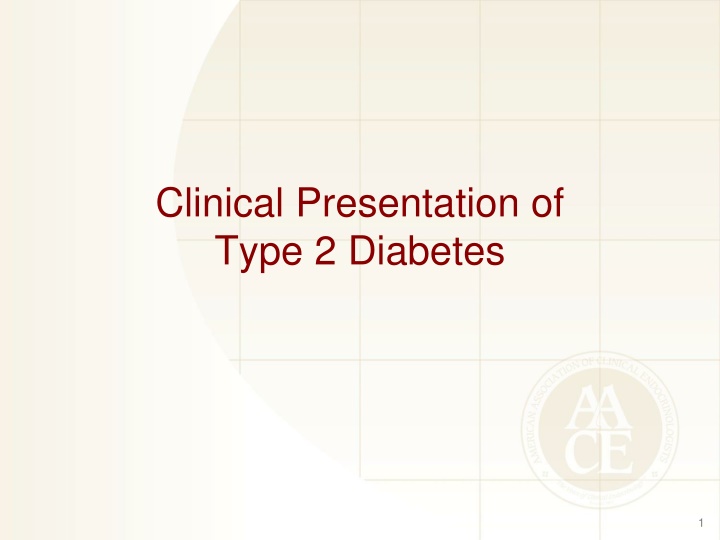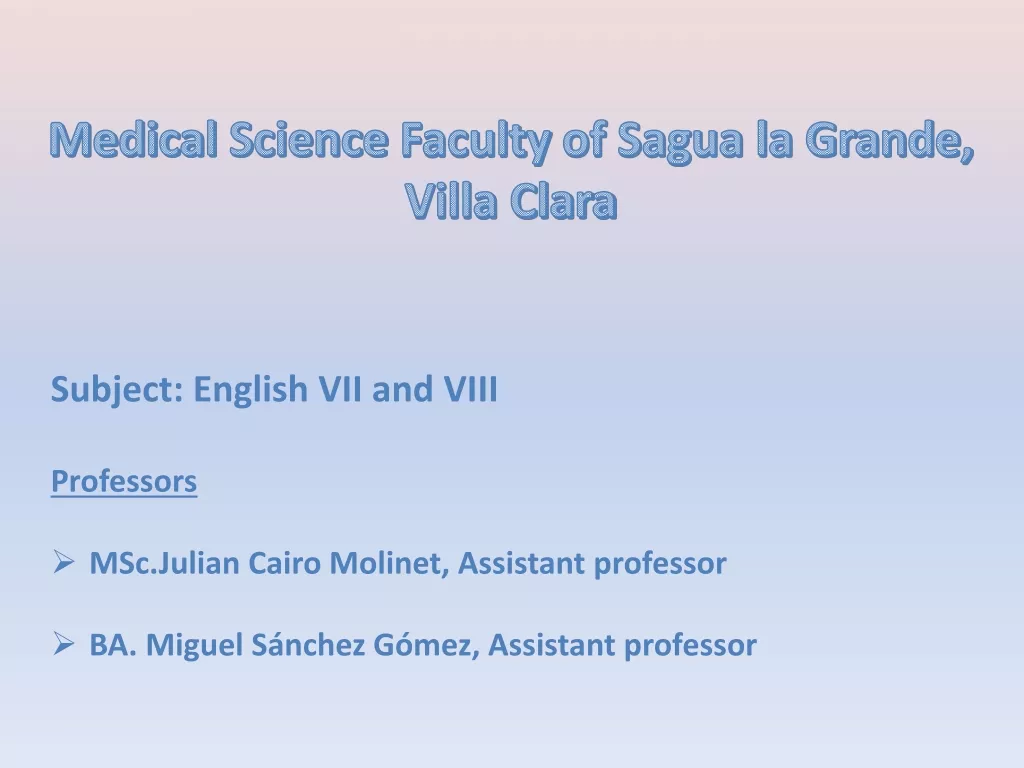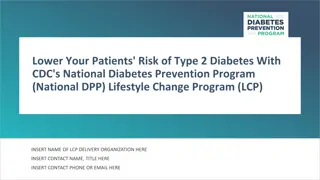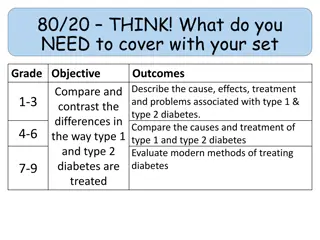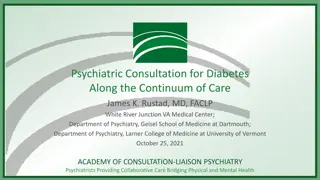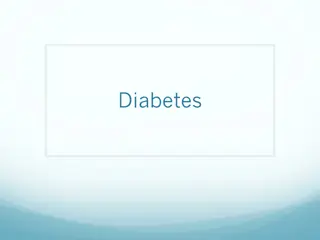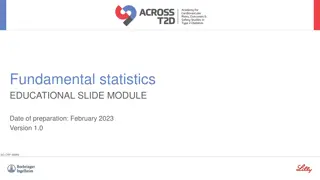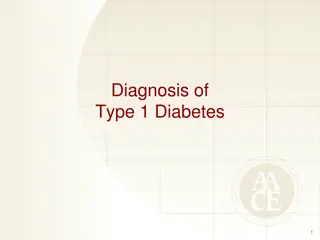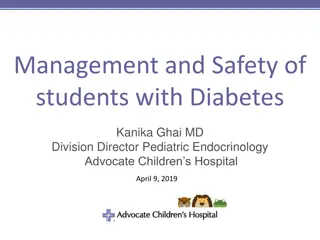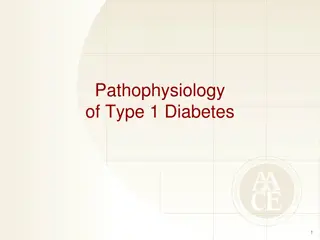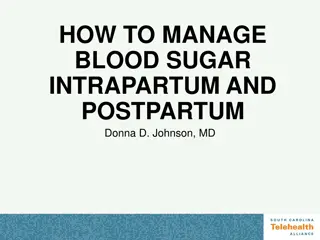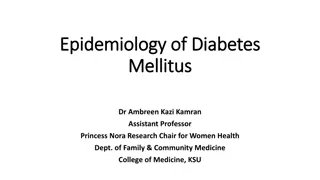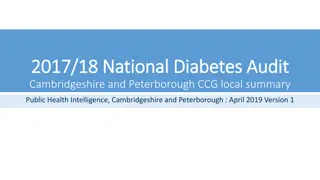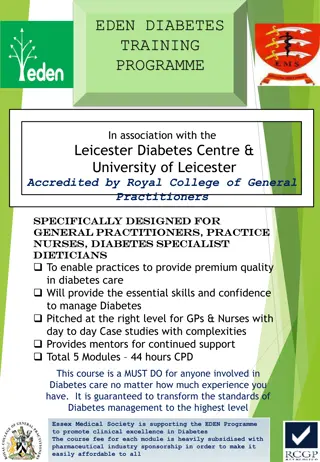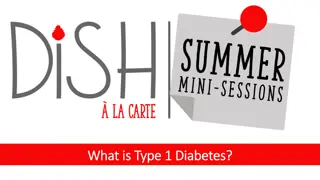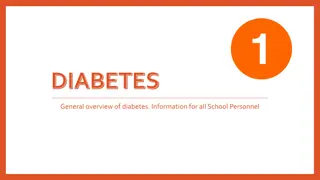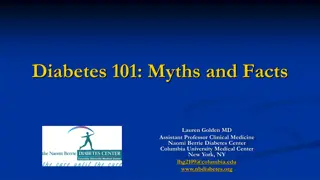Clinical Presentation and Risk Factors of Type 2 Diabetes
This content provides an in-depth look at the clinical presentation and risk factors associated with type 2 diabetes, including insights on the development, etiology, and progression of the disease. Covering factors such as insulin resistance, beta-cell dysfunction, genetic predisposition, lifestyle influences, and more, this resource aims to enhance understanding of the complexities of type 2 diabetes.
Download Presentation

Please find below an Image/Link to download the presentation.
The content on the website is provided AS IS for your information and personal use only. It may not be sold, licensed, or shared on other websites without obtaining consent from the author.If you encounter any issues during the download, it is possible that the publisher has removed the file from their server.
You are allowed to download the files provided on this website for personal or commercial use, subject to the condition that they are used lawfully. All files are the property of their respective owners.
The content on the website is provided AS IS for your information and personal use only. It may not be sold, licensed, or shared on other websites without obtaining consent from the author.
E N D
Presentation Transcript
Clinical Presentation of Type 2 Diabetes 1
Risk Factors for Prediabetes and Type 2 Diabetes History of gestational diabetes Delivery of baby weighing >4 kg (>9 lb) Antipsychotic therapy for schizophrenia or severe bipolar disease Chronic glucocorticoid exposure Sleep disorders Obstructive sleep apnea Chronic sleep deprivation Night shift work Age 45 years Family history of T2D or cardiovascular disease Overweight or obese Sedentary lifestyle Non-Caucasian ancestry Previously identified IGT, IFG, and/or metabolic syndrome PCOS, acanthosis nigricans, or NAFLD Hypertension (BP >140/90 mmHg) Dyslipidemia (HDL-C <35 mg/dL and/or triglycerides >250 mg/dL) BP, blood pressure; HCL-C, high density lipoprotein cholesterol; IFG, impaired fasting glucose; IGT, impaired glucose tolerance; NAFLD, nonalcoholic fatty liver disease; PCOS, polycystic ovary syndrome; T2D, type 2 diabetes. 2 Handelsman YH, et al. Endocr Pract. 2015;21(suppl 1):1-87.
Development of Type 2 Diabetes Depends on Interplay Between Insulin Resistance and -Cell Dysfunction Genes & environment Genes & environment Normal -Cell Function No Compensatory hyperinsulinemia Insulin resistance diabetes Abnormal -Cell Function Relative insulin deficiency Type 2 diabetes Insulin resistance 3 Gerich JE. Mayo Clin Proc. 2003;78:447-456.
Etiology of -cell Dysfunction Genetic predisposition Lean phenotype Obese phenotype IGT, IFG Elevated FFA Initial glucolipoadaptation (increased FFA usage) Hyperglycemia Oxidative stress and glucotoxicity Cellular lipid synthesis and glucolipotoxicity Glucolipotoxicity and glucotoxicity Progressive -cell failure and type 2 diabetes 4 Poitout V, Robertson RP. Endocrine Rev. 2008;29:351-366.
Progression to Type 2 Diabetes: Falling Off the Curve 500 400 Nonprogressors NGT 300 NGT NGT NGT 200 IGT Progressors 100 DIA 0 0 1 2 3 4 5 Glucose disposal (insulin sensitivity) (mg/kg EMBS/min) EMBS, estimated metabolic body size; IGT, impaired glucose tolerance; NGT, normal glucose tolerance. 5 Weyer C et al. J Clin Invest. 1999;104:787-794.
Pathophysiology of Type 2 Diabetes Organ System Defect Major Role Pancreatic beta cells Decreased insulin secretion Muscle Inefficient glucose uptake Increased endogenous glucose secretion Liver Contributing Role Adipose tissue Increased FFA production Digestive tract Decreased incretin effect Pancreatic alpha cells Increased glucagon secretion Kidney Increased glucose reabsorption Nervous system Neurotransmitter dysfunction 6 DeFronzo RA. Diabetes. 2009;58:773-795
Tissues Involved in T2D Pathophysiology Organ System Normal Metabolic Function Defect in T2D Major Role Pancreatic beta cells Secrete insulin Decreased insulin secretion Muscle Metabolizes glucose for energy Inefficient glucose uptake Secretes glucose during fasting periods to maintain brain function; main site of gluconeogenesis (glucose production in the body) Increased endogenous glucose secretion Liver Contributing Role Stores small amounts of glucose for its own use. When fat is broken down, glycerol is released, which is used by the liver to produce glucose Digests and absorbs carbohydrates and secretes incretin hormones Secrete glucagon, which stimulates hepatic glucose production between meals and also helps suppress insulin secretion during fasting periods Reabsorbs glucose from renal filtrate to maintain glucose at steady-state levels; also an important site for gluconeogenesis (glucose production) Utilizes glucose for brain and nerve function Regulates appetite Adipose tissue (fat) Increased FFA production Digestive tract Decreased incretin effect Pancreatic alpha cells Increased glucagon secretion Kidney Increased glucose reabsorption Brain Neurotransmitter dysfunction T2D, type 2 diabetes. 7 DeFronzo RA. Diabetes. 2009;58:773-795
Natural History of Type 2 Diabetes Years from diagnosis 10 5 15 10 5 0 Onset Diagnosis -Cell function Insulin resistance Insulin secretion Postprandial glucose Fasting glucose Microvascular complications Macrovascular complications Prediabetes Type 2 diabetes Figure courtesy of CADRE. Adapted from Holman RR. Diabetes Res Clin Pract. 1998;40(suppl):S21-S25; Ramlo-Halsted BA, Edelman SV. Prim Care. 1999;26:771-789; Nathan DM. N Engl J Med. 2002;347:1342-1349; UKPDS Group. Diabetes. 1995;44:1249-1258 8
-cell Loss Over Time UKPDS 100 75 -Cell Function (%) 50 25 Impaired Glucose Tolerance Postprandial Hyperglycemia Type 2 Diabetes 0 -12 l l l l 0 l 2 l 6 l l l -10 -6 10 14 -2 Years from Diagnosis Dashed line = extrapolation based on Homeostasis Model Assessment (HOMA) data. Data points from obese UKPDS population, determined by HOMA model. 9 Holman RR. Diabetes Res Clin Pract. 1998;40(suppl):S21-S25.
Normal Glucose Homeostasis and Pre- and Postmeal Insulin and Glucagon Dynamics Normal (n=11) Premeal Postmeal 120 90 60 Meal Insulin ( U/mL) Insulin Insulin 30 0 140 130 120 110 100 90 Glucagon Glucagon Glucagon (pg/mL) HGP HGP 360 330 300 270 240 Modest postprandial increase with prompt return to fasting levels Just enough glucose to meet metabolic needs between meals Glucose (mg %) 110 80 -60 0 60 120 180 240 Time (min) 10 M ller WA, et al. N Engl J Med. 1970;283:109-115.
Hyperglycemia in Type 2 Diabetes Results from Abnormal Insulin and Glucagon Dynamics Normal (n=11) Premeal Postmeal 120 90 60 Meal T2D (n=12) Insulin ( U/mL) Insulin Insulin 30 0 140 130 120 110 100 90 Glucagon Glucagon Glucagon (pg/mL) HGP HGP 360 330 300 270 240 Glucose (mg %) FPG PPG 110 80 -60 0 60 120 180 240 Time (min) T2D, type 2 diabetes. 11 M ller WA, et al. N Engl J Med. 1970;283:109-115.
Acute Insulin Response Is Reduced in Type 2 Diabetes 1st 2nd phase 20 g glucose infusion 120 Normal (n=85) Type 2 diabetes (n=160) 100 80 Plasma IRI ( U/ml) 60 40 20 0 -30 0 30 60 90 120 Time (minutes) IRI, immunoreactive insulin. 12 Pfeifer MA, et al. Am J Med. 1981;70:579-588.
Defective Insulin Action in Type 2 Diabetes 7 12 6 Total Body Glucose Uptake (mg/kg leg wt per min) 5 Leg Glucose Uptake 8 (mg/kg min) 4 3 4 2 P<0.01 1 0 0 Normal T2D 0 20 60 100 140 180 Time (minutes) T2D, type 2 diabetes. 13 DeFronzo RA. Diabetes. 2009;58:773-795; DeFronzo RA, et al. J Clin Invest. 1985;76:149-155.
Elevated Fasting Glucose in Type 2 Diabetes Results From Increased HGP 4.0 3.5 r=0.85 P<0.001 (mg/kg min) Basal HGP 3.0 2.5 Control 2.0 T2D 0 100 200 300 FPG (mg/dL) FPG, fasting plasma glucose; HGP, hepatic glucose production; T2D, type 2 diabetes. 14 DeFronzo RA, et al. Metabolism. 1989;38:387-395.
The Incretin Effect Is Diminished in Type 2 Diabetes Normal Glucose Tolerance (n=8) IV Glucose 240 Type 2 Diabetes (n=14) Plasma Glucose (mg/dL) 240 Plasma Glucose (mg/dL) Oral Glucose 180 180 90 90 0 0 0 60 120 180 0 60 120 180 30 30 C-Peptide (nmol/L) C-peptide (nmol/L) 20 20 * * * * * * 10 10 * * 0 0 0 60 120 180 0 60 120 180 Time (min) Time (min) *P .05. 15 Nauck M, et al. Diabetologia. 1986;29:46-52.
Actions of GLP-1 and GIP GLP-1 GIP Released from L cells in ileum and colon Stimulates insulin release from -cell in a glucose-dependent manner Potent inhibition of gastric emptying Potent inhibition of glucagon secretion Reduction of food intake and body weight Significant effects on -cell growth and survival Released from K cells in duodenum Stimulates insulin release from -cell in a glucose dependent manner Minimal effects on gastric emptying No significant inhibition of glucagon secretion No significant effects on satiety or body weight Potential effects on -cell growth and survival 16 Drucker DJ. Diabetes Care 2003;26:2929-2940.
Renal Glucose Reabsorption in Type 2 Diabetes Sodium-glucose cotransporters 1 and 2 (SGLT1 and SGLT2) reabsorb glucose in the proximal tubule of kidney Ensures glucose availability during fasting periods Renal glucose reabsorption is increased in type 2 diabetes Contributes to fasting and postprandial hyperglycemia Hyperglycemia leads to increased SGLT2 levels, which raises the blood glucose threshold for urinary glucose excretion 17 Wright EM, et al. J Intern Med. 2007;261:32-43.
Normal Renal Handling of Glucose (180 L/day) (90 mg/dL) = 162 g glucose per day Glucose SGLT2 S1 SGLT1 S3 90% of glucose 10% of glucose No Glucose 18 Abdul-Ghani MA, et al. Endocr Pract. 2008;14:782-790.
Increased SGLT2 Protein Levels Change Glucose Reabsorption and Excretion Thresholds Reabsorption Excretion TmG Reabsorption increases Renal Glucose Reabsorption TmG Renal Glucose Excretion Excretion threshold increases 90 180 90 180 270 270 Blood Glucose Concentration (mg/dL) Blood Glucose Concentration (mg/dL) TmG, glucose transport maximum. Abdul-Ghani MA, DeFronzo RA. Endocr Pract. 2008;14:782-790. 19
Hypothalamic Dopaminergic Tone and Autonomic Imbalance In diabetes: Low dopaminergic tone in hypothalamus in early morning Sympathetic tone HPA axis tone Hepatic gluconeogenesis FFA and TG Insulin resistance Inflammation/hypercoagulation Impaired glucose metabolism Hyperglycemia Insulin resistance Adverse cardiovascular pathology Fonseca V. Dopamine Agonists in Type 2 Diabetes. New York, NY: Oxford University Press; 2010. Cincotta AH. In: Hansen B, Shafrir E, eds. Insulin Resistance and Insulin Resistance Syndrome. New York, NY: Taylor & Francis; 2002:271-312. 20 20
